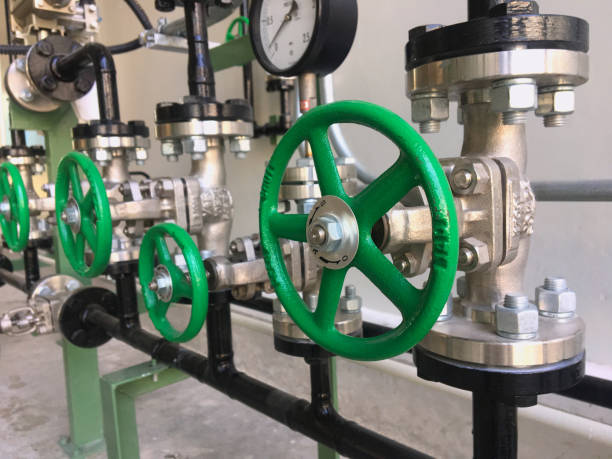Valves control the flow of liquid by letting it start and stop. They must work right to prevent leaks and unwanted flow. Gate valves and butterfly valves are two of the most prevalent industrial valves.
These two structural designs, applications, and operating principles are highly dissimilar. This article is about butterfly vs gate valve and their differences.
What Is A Butterfly Valve?
Butterfly valves are quarter-turn flow-stopping valves. Mostly, it is known to control flow. However, it is not advisable for it will harm the sealing properties of the valve discs, which turning the handle 90 degrees closes or opens the valve. Large valves have a gearbox that connects the handwheel to the stem. It makes valve operation easier yet slower.
Valves are employed in collecting and pumping stations, water supply, distribution, etc. They’re helpful for flow isolation. Simple construction and compactness make them lighter, less expensive, and faster than other valve families.
Butterfly valves come in many sizes, shapes, and pressures. Butterfly valve disk designs are three-fold. Zero-offset, double-offset, and triple-offset butterfly valves are available (triple eccentric).
What Is A Gate Valve?
The gate valve is most commonly used, especially in water delivery systems. It is a linear-motion isolation valve that either blocks or allows it to pass. These valves should not regulate the flow; instead, they are used to open or fully close because fractional openings can result in damage. The name “gate valve” derives from the fact that the closing component of the valve slides into the fluid to shut it off, so operating as a gate. In addition to rerouting water flow across the pipeline, gate valves isolate specific sections of the water supply network for maintenance, repair, and new installation.
Nowadays, gate valves are the most extensively used for various low-pressure-drop applications. Its design is a full-port valve. It indicates that the valve port has the exact size of the pipe’s inner diameter connecting inside. Moreover, a full-bore gate valve allows fluid to flow through a pipeline without obstruction or pressure loss. The pipe will be cleaned using the cleaning pig.
What Are The Differences Between Butterfly Valves And Gate Valves?
- Gate Valves Control Flow And Butterfly Valves Shuts Off.
Gate valves control flow, and it has a rectangular or circular disk on a stem. Moreover, the handwheels activate the gate valves. An actuator turns a valve stem. It’s a multi-turn valve since opening or closing it takes more than 360°. Turning the handle wheel clockwise moves the stem and gate over the fluid flow line and between two seats. Once the valve is closed, no fluid will leak. When the handle wheel is turned counterclockwise, the stem and gate move upward, allowing fluid to flow through the gate valve. When the gate valve is fully open, fluid flow is little.
Butterfly valves act like ball valves, allowing rapid shutoff. Butterfly valves are cheap and lightweight, such as the broadcast ptz camera, are inexpensive and lightweight, so they don’t need as much support. A rod connects the disc actuator outside the valve to the pipe’s center. The actuator turns the disc perpendicular to the flow. The disc is always in the flow, causing pressure to drop even when the valve is open.
Butterfly valves are quarter-turn. The butterfly is a metal disc on a rod. The disc revolves as the valve closes, blocking the path. When the valve is fully open, a quarter-turn of the disc lets most of the fluid through.
- Gate Valves Are For Good Sealing, While Butterfly Valves Are For Quick Open And Close
In pipelines requiring a tight seal that does not require frequent switching, gate valves are commonly used because they have an excellent sealing property. Since precise control is difficult, they can only use the fully open or fully closed form and can’t throttle the medium flow rate. The seat and gate will deteriorate rapidly if the valve is maintained in a partially or immediately open position. The chattering wedge generates noises and vibrations within the pipeline. In addition, due to the gate valve’s opening and closing, actions are slow. It is not suited for channels that require emergencies, like the usage of surgical gloves types and channel shutoffs. Unlike butterfly valves, gate valves can withstand higher pressures along the pipe. In large piping systems that require continuous bi-directional liquid and gas flows, as well as time-based uni-directional media discharges, gate valves are widely used.
Butterfly valves are ideal for applications that require rapid opening and closure, such as emergency shutoffs because they can be opened and closed quickly and frequently. In addition to truncation, they are also employed to modify or throttle flow rates. Butterfly valves are optimal for pipelines carrying microscopic contaminants. Since it is utilized in instances with moderate to high heat and pressure, Butterfly valves are also known as high-performance valves.
Conclusion
Both valves are intended to serve as flow conduits and not as regulators. Both are not suitable for prolonged use. Once discharged, it will no longer control the flow. Gate and butterfly valves are two of the most frequent valves. There are significant differences between the two in terms of structure, usage, and adaptability to working conditions. You can determine which valve best suits your needs by learning the distinctions between the two valves.

